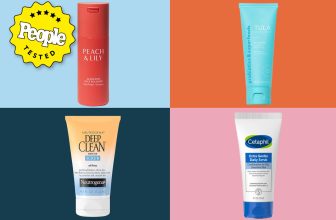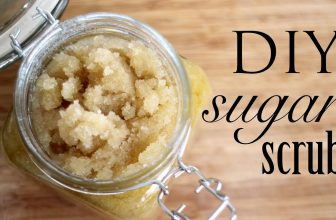How Long Should I Tan Outside Without Sunscreen

You should tan outside without sunscreen for about 10-30 minutes to avoid skin damage. Excessive sun exposure can lead to sunburn and increase the risk of skin cancer.
How Long Should I Tan Outside Without Sunscreen finding the right balance between enjoying the sun and protecting your skin is crucial. Understanding your skin type and the UV index in your area can help you determine the safe duration for tanning. Remember, it’s essential to prioritize your skin’s health while enjoying the sun’s benefits.
By following some simple guidelines, you can achieve a healthy tan without compromising your skin’s well-being. Let’s explore how you can safely and effectively tan outdoors without sunscreen.
Introduction To Sun Exposure And Skin Health
The Role Of Sunlight In Vitamin D Synthesis
Sunlight plays a crucial role in the synthesis of vitamin D within our bodies. When our skin is exposed to the sun’s ultraviolet B (UVB) rays, it triggers a process that converts a cholesterol derivative in the skin into vitamin D.
Risks Associated With Prolonged Sun Exposure
Prolonged exposure to the sun can lead to various risks such as sunburn, premature skin aging, and an increased risk of skin cancer. UV radiation from the sun can cause damage to the DNA in our skin cells, leading to mutations that can contribute to skin cancer.
Understanding Uv Radiation
Many people love tanning outside to achieve that sun-kissed glow. While a little bit of sunlight can be beneficial for your health, too much exposure to UV radiation can cause severe damage to your skin. Understanding UV radiation is crucial to ensure that you get the right amount of sun exposure without harming your skin.
Types Of Uv Rays And Their Effects On The Skin
UV radiation is a type of electromagnetic radiation that comes from the sun. There are three types of UV rays: UVA, UVB, and UVC.
| Type of UV Ray | Wavelength | Effect on Skin |
| UVA | 320-400 nm | Penetrates deep into the skin, causes premature aging, wrinkles, and skin cancer |
| UVB | 290-320 nm | Causes sunburn, skin cancer, and cataracts |
| UVC | 100-290 nm | Mostly absorbed by the earth’s atmosphere, not a significant threat to human skin |
Both UVA and UVB rays can cause skin damage and increase the risk of skin cancer.
Uv Index And Its Importance In Gauging Sun Exposure
The UV index is a measure of the strength of UV radiation from the sun. It ranges from 0 to 11+, with higher values indicating a higher risk of skin damage. The UV index takes into account factors such as time of day, cloud cover, altitude, and ozone levels.
- A UV index of 0-2 is considered low
- A UV index of 3-5 is considered moderate
- A UV index of 6-7 is considered high
- A UV index of 8-10 is considered very high
- A UV index of 11+ is considered extreme
It’s essential to check the UV index before spending time outdoors and take necessary precautions to protect your skin.
Overall, understanding UV radiation is crucial for your skin’s health. By knowing the types of UV rays, their effects on the skin, and the UV index, you can take appropriate measures to protect your skin from sun damage while still enjoying the benefits of sunlight.
Safe Tanning Practices
Safe tanning practices are essential for maintaining healthy skin while enjoying the benefits of sun exposure. Understanding the best times of day for safer sun exposure and appropriate durations for tanning without sunscreen can help you achieve a sun-kissed glow without compromising your skin’s health.
Best Times Of Day For Safer Sun Exposure
The best times for safe sun exposure are generally early in the morning or late in the afternoon, when the sun’s rays are less intense. Avoid prolonged exposure during the peak hours of 10 a.m. to 4 p.m. when the sun is at its strongest.
Appropriate Durations For Sun Exposure Without Sunscreen
It’s important to gradually build up your sun exposure to prevent sunburn. Start with 10-15 minutes of unprotected sun exposure and gradually increase the duration as your skin becomes accustomed to the sun. Limit your time to 30 minutes to 1 hour to minimize the risk of overexposure.
Factors Influencing Sun Exposure Limits
Skin Type And Melanin’s Role In Protection
People with fair skin have lower sun tolerance levels.
Geographical Impact On Sun Intensity
Equatorial regions have higher sun intensity levels.
Protective Measures Beyond Sunscreen
Clothing And Accessories For Sun Protection
Wearing protective clothing and accessories can shield your skin from harmful UV rays.
- Wide-brimmed hats can protect your face, neck, and ears.
- Sunglasses with UV protection safeguard your eyes.
- Long-sleeved shirts and pants offer additional coverage.
Seeking Shade And Its Benefits
Spending time in the shade reduces direct exposure to sunlight, lowering the risk of sunburn.
- Natural shade from trees or umbrellas provides effective protection.
- Seek shade during peak sun hours, typically between 10 am and 4 pm.
- Regular breaks in shaded areas help prevent overexposure to UV radiation.
Myths And Facts About Tanning
When it comes to tanning, there are many myths and misconceptions that can lead to confusion. Let’s address some of the most prevalent myths and uncover the truth about tanning.
Debunking Common Tanning Myths
Myth 1: A base tan protects you from sunburn
Fact: There is no such thing as a safe tan. Any change in your skin color is a sign of skin damage.
Myth 2: You can’t get sunburned on a cloudy day
Fact: Up to 80% of the sun’s UV rays can penetrate clouds, so it’s still important to use sunscreen on overcast days.
Fact: Sunscreen helps to protect your skin from harmful UV rays, but it doesn’t completely block the tanning process.
Understanding The Truth About Sunbathing And Health
Myth 4: A tan is a sign of good health
Fact: Tanning is a sign of skin damage, not health. Overexposure to UV radiation can lead to skin cancer and premature aging.
Myth 5: You need to tan to get enough vitamin D
Fact: Your body can produce vitamin D with just a few minutes of sun exposure, and you can also obtain it from supplements and certain foods.
Myth 6: Indoor tanning is safer than outdoor tanning
Fact: Both indoor and outdoor tanning expose your skin to harmful UV radiation, increasing the risk of skin cancer and other health issues.
When And How To Use Sunscreen Effectively
When it comes to tanning, many people wonder how long they can stay in the sun without sunscreen. However, it’s important to understand that sunscreen is crucial for protecting your skin from harmful UV rays. Here are some guidelines for using sunscreen effectively:
Choosing The Right Spf
Sunscreen comes in a range of SPFs, or Sun Protection Factors. The higher the SPF, the more protection it offers against UVB rays, the type of radiation that causes sunburn. For most people, an SPF of at least 30 is recommended. However, if you have fair skin or a history of skin cancer, you may want to choose an even higher SPF.
Guidelines For Application And Reapplication
It’s important to apply sunscreen liberally and evenly to all exposed skin at least 15 minutes before going outside. Be sure to reapply every two hours, or more frequently if you’re swimming or sweating. You should also reapply after toweling off or if the sunscreen has rubbed off.
Here are some additional tips for using sunscreen effectively:
- Use enough sunscreen to cover all exposed skin
- Don’t forget to apply to your ears, neck, and scalp
- If you’re using spray sunscreen, make sure to rub it in after spraying
- Don’t skimp on the sunscreen, even if you’re in the shade
By following these guidelines, you can enjoy the sun safely and avoid the harmful effects of UV rays. Remember, sunscreen is your best defense against skin damage and cancer, so be sure to use it effectively every time you go outside.

Monitoring And Managing Sun Exposure
Tools And Apps To Track Safe Sun Exposure
There are various tools and apps available that can help you monitor your sun exposure and ensure that you are staying safe while tanning. These tools often take into account your location, skin type, and the current UV index to provide personalized recommendations for sun exposure. Some popular apps include SunZapp, UVLens, and SunSmart.
Recognizing Signs Of Overexposure And Sun Damage
It’s crucial to recognize the signs of overexposure and sun damage to your skin. Symptoms such as redness, pain, blistering, and peeling indicate that you may have spent too much time in the sun without protection. Additionally, long-term sun damage can manifest as premature aging, dark spots, and an increased risk of skin cancer.

Frequently Asked Questions
How Long Does It Take To Tan Without Sunscreen?
Tanning without sunscreen can vary. It typically takes 10-30 minutes for skin to start darkening. Sunburn can occur quickly, within 15-30 minutes of exposure.
Is 30 Minutes In The Sun Enough To Tan?
Yes, 30 minutes in the sun can lead to tanning. However, it’s important to use sunscreen and reapply as directed.
How Long Can I Stay Outside Without Sunscreen?
Limit sun exposure to 15-30 minutes without sunscreen to avoid sunburn and skin damage.
How Long Does It Take To Get A Noticeable Tan?
Typically, it takes about 2-3 hours of sun exposure per day over 3-5 days to get a noticeable tan.
Conclusion
Tanning without sunscreen should be done cautiously and in moderation. It’s important to consider your skin type, the time of day, and the UV index. Always prioritize skin safety and consider using sunscreen to protect against harmful UV rays. Remember to enjoy the sun responsibly for a healthy and glowing complexion.







